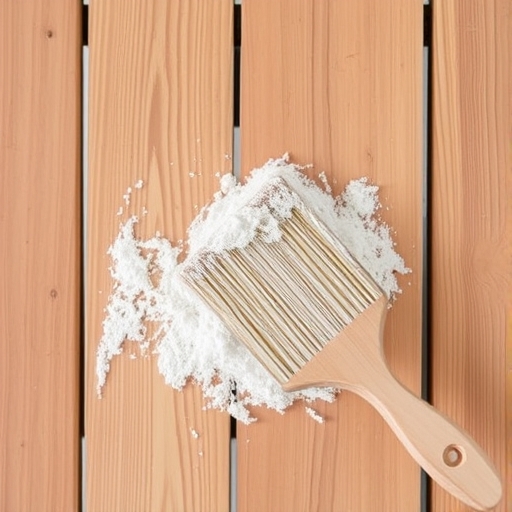How to Remove Paint From Wood: A Comprehensive Guide
Removing paint from wood can seem like a daunting task, but with the right techniques and tools, you can restore your wooden surfaces to their natural beauty. Whether you are dealing with old furniture, wooden floors, or DIY projects, this guide will provide you with step-by-step instructions, tips, and tricks to effectively remove paint from wood.
Understanding the Types of Paint
Before diving into the removal process, it’s essential to identify the type of paint you are dealing with. The two most common types of paint used on wood are:
Oil-Based Paint
- Characteristics: Glossy finish, strong odor, takes longer to dry.
- Removal: Requires solvents like mineral spirits or paint thinner.
- Characteristics: Less odor, dries quickly, often used for interior applications.
- Removal: Can be removed with soap and water or specialized paint removers.
- Paint Scraper: For scraping off paint layers.
- Putty Knife: Useful for getting into crevices.
- Sandpaper: Various grits (80 to 220) for smoothing the surface.
- Wire Brush: For stubborn paint spots.
- Safety Gear: Gloves, goggles, and a mask for protection.
- Chemical Paint Stripper: Effective for both oil and water-based paints.
- Heat Gun: Softens paint for easier removal.
- Mineral Spirits: For oil-based paints.
- Soap and Water: For water-based paints.
- For Chemical Stripper: Wipe down with mineral spirits to remove residue.
- For Heat Gun: Sand lightly to smooth any rough edges.
- For Water-Based Paint: Wash with soap and water.
- Stain or Paint: Apply a new finish if desired.
- Seal the Wood: Use a wood conditioner or sealant to protect the surface.
- Work in Sections: Focus on small areas at a time for better control.
- Patience is Key: Allow sufficient time for the paint remover to work.
- Safety First: Always wear gloves and a mask when using chemical strippers.
Water-Based Paint
Tools and Materials Needed
To successfully remove paint from wood, you will need the following tools and materials:
Basic Tools
Paint Removal Solutions
Step-by-Step Guide to Removing Paint from Wood
Step 1: Prepare the Area
1. Choose a Well-Ventilated Space: If you’re using chemical strippers or a heat gun, ensure your workspace is well-ventilated.
2. Lay Down Drop Cloths: Protect your floors and surrounding areas from paint splatters.
3. Gather Your Tools and Materials: Have everything you need within reach.
Step 2: Test a Small Area
Before applying any paint removal method, test it on a small, inconspicuous area of the wood to ensure it doesn’t damage the surface.
Step 3: Choose Your Method
Method 1: Chemical Paint Stripper
1. Apply the Stripper: Following the manufacturer’s instructions, apply the chemical stripper generously to the painted surface.
2. Let it Sit: Allow the stripper to work for the recommended time (usually 15-30 minutes).
3. Scrape Off the Paint: Use a paint scraper to gently remove the softened paint.
Method 2: Heat Gun
1. Set the Heat Gun: Use a low setting to prevent burning the wood.
2. Heat the Paint: Hold the heat gun a few inches away from the surface and move it back and forth to soften the paint.
3. Scrape Away the Paint: Once the paint bubbles, use a scraper to remove it.
Method 3: Sanding
1. Start with Coarse Sandpaper: Use 80-grit sandpaper to remove the bulk of the paint.
2. Move to Finer Grit: Gradually switch to finer grits (120-220) to smooth the surface.
3. Clean the Dust: Use a vacuum or a damp cloth to remove sanding dust.
Step 4: Clean the Wood
After removing the paint, clean the wood thoroughly:
Step 5: Finish the Surface
Once the paint is removed and the wood is clean, you may want to:
Tips for Success
Comparison of Paint Removal Methods
| Method | Pros | Cons |
|---|---|---|
| Chemical Stripper | Fast and effective for multiple layers | Can be harsh and toxic; requires ventilation |
| Heat Gun | Works well on thick layers | Risk of damaging wood if overheated |
| Sanding | Good for final smoothing and finishing | Labor-intensive; can create dust |
Frequently Asked Questions (FAQ)
Q1: Can I use vinegar to remove paint from wood?
A: Vinegar can help remove water-based paints but may not be effective on oil-based paints. It’s best to use a dedicated paint remover for tougher jobs.
Q2: How do I know if I have lead-based paint?
A: Homes built before 1978 may contain lead-based paint. Use a lead test kit available at hardware stores for confirmation.
Q3: Is it safe to use chemical strippers indoors?
A: It’s not recommended due to the fumes. Always work in a well-ventilated area or outdoors.
Q4: What if the wood is damaged during paint removal?
A: If the wood surface is damaged, you may need to sand down the area and refinish it to restore its appearance.
Q5: How can I prevent paint from peeling in the future?
A: Make sure the wood is clean and dry before painting. Use high-quality paint and primer suited for the wood type.
Conclusion
Removing paint from wood can be a rewarding but meticulous process. By understanding the types of paint, selecting the right method, and following the steps outlined in this guide, you can successfully restore your wooden surfaces. Always prioritize safety and take your time to ensure the best results. Whether you’re refinishing old furniture or prepping a new project, the right approach will yield beautiful, clean wood ready for its next chapter.

